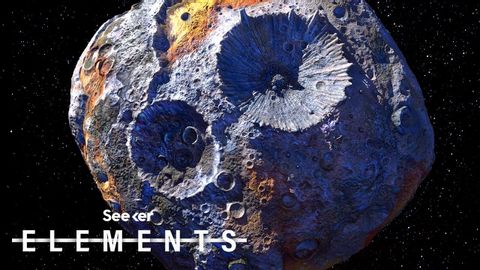
字幕と単語
金属製の小惑星が地球の核の秘密を解き明かすかもしれない|打ち上げまでのカウントダウン (This Metal Asteroid Could Reveal Secrets About Earth’s Core | Countdown to Launch)
00
林宜悉 が 2021 年 01 月 14 日 に投稿保存
動画の中の単語
strike
US /straɪk/
・
UK /straɪk/
- v.t.打つ;削除する
- n. (c./u.)打つ;ストライク;ストライキ;ストライク;攻撃
- v.i.突然~の状態になる;突然思いつく
A2 初級TOEIC
もっと見る エネルギーを使用
すべての単語を解除
発音・解説・フィルター機能を解除
